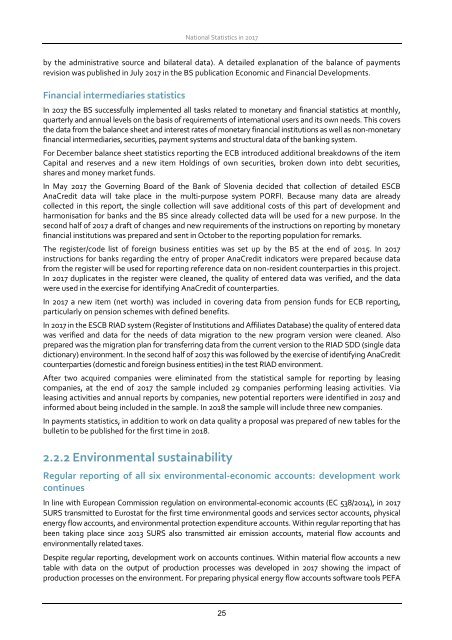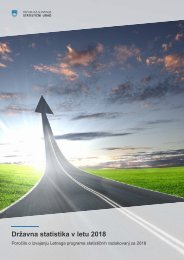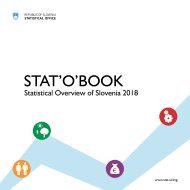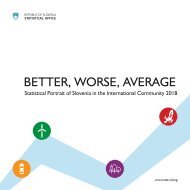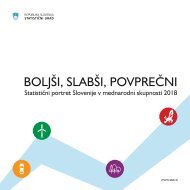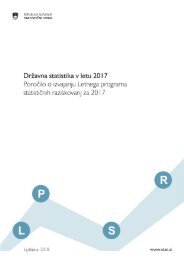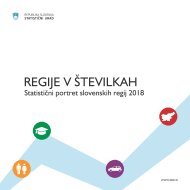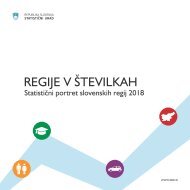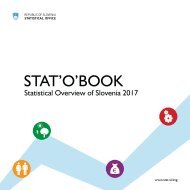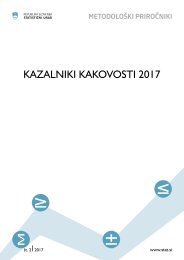LPSR-2018-ang
Create successful ePaper yourself
Turn your PDF publications into a flip-book with our unique Google optimized e-Paper software.
National Statistics in 2017<br />
by the administrative source and bilateral data). A detailed explanation of the balance of payments<br />
revision was published in July 2017 in the BS publication Economic and Financial Developments.<br />
Financial intermediaries statistics<br />
In 2017 the BS successfully implemented all tasks related to monetary and financial statistics at monthly,<br />
quarterly and annual levels on the basis of requirements of international users and its own needs. This covers<br />
the data from the balance sheet and interest rates of monetary financial institutions as well as non‐monetary<br />
financial intermediaries, securities, payment systems and structural data of the banking system.<br />
For December balance sheet statistics reporting the ECB introduced additional breakdowns of the item<br />
Capital and reserves and a new item Holdings of own securities, broken down into debt securities,<br />
shares and money market funds.<br />
In May 2017 the Governing Board of the Bank of Slovenia decided that collection of detailed ESCB<br />
AnaCredit data will take place in the multi‐purpose system PORFI. Because many data are already<br />
collected in this report, the single collection will save additional costs of this part of development and<br />
harmonisation for banks and the BS since already collected data will be used for a new purpose. In the<br />
second half of 2017 a draft of ch<strong>ang</strong>es and new requirements of the instructions on reporting by monetary<br />
financial institutions was prepared and sent in October to the reporting population for remarks.<br />
The register/code list of foreign business entities was set up by the BS at the end of 2015. In 2017<br />
instructions for banks regarding the entry of proper AnaCredit indicators were prepared because data<br />
from the register will be used for reporting reference data on non‐resident counterparties in this project.<br />
In 2017 duplicates in the register were cleaned, the quality of entered data was verified, and the data<br />
were used in the exercise for identifying AnaCredit of counterparties.<br />
In 2017 a new item (net worth) was included in covering data from pension funds for ECB reporting,<br />
particularly on pension schemes with defined benefits.<br />
In 2017 in the ESCB RIAD system (Register of Institutions and Affiliates Database) the quality of entered data<br />
was verified and data for the needs of data migration to the new program version were cleaned. Also<br />
prepared was the migration plan for transferring data from the current version to the RIAD SDD (single data<br />
dictionary) environment. In the second half of 2017 this was followed by the exercise of identifying AnaCredit<br />
counterparties (domestic and foreign business entities) in the test RIAD environment.<br />
After two acquired companies were eliminated from the statistical sample for reporting by leasing<br />
companies, at the end of 2017 the sample included 29 companies performing leasing activities. Via<br />
leasing activities and annual reports by companies, new potential reporters were identified in 2017 and<br />
informed about being included in the sample. In <strong>2018</strong> the sample will include three new companies.<br />
In payments statistics, in addition to work on data quality a proposal was prepared of new tables for the<br />
bulletin to be published for the first time in <strong>2018</strong>.<br />
2.2.2 Environmental sustainability<br />
Regular reporting of all six environmental‐economic accounts: development work<br />
continues<br />
In line with European Commission regulation on environmental‐economic accounts (EC 538/2014), in 2017<br />
SURS transmitted to Eurostat for the first time environmental goods and services sector accounts, physical<br />
energy flow accounts, and environmental protection expenditure accounts. Within regular reporting that has<br />
been taking place since 2013 SURS also transmitted air emission accounts, material flow accounts and<br />
environmentally related taxes.<br />
Despite regular reporting, development work on accounts continues. Within material flow accounts a new<br />
table with data on the output of production processes was developed in 2017 showing the impact of<br />
production processes on the environment. For preparing physical energy flow accounts software tools PEFA<br />
25


